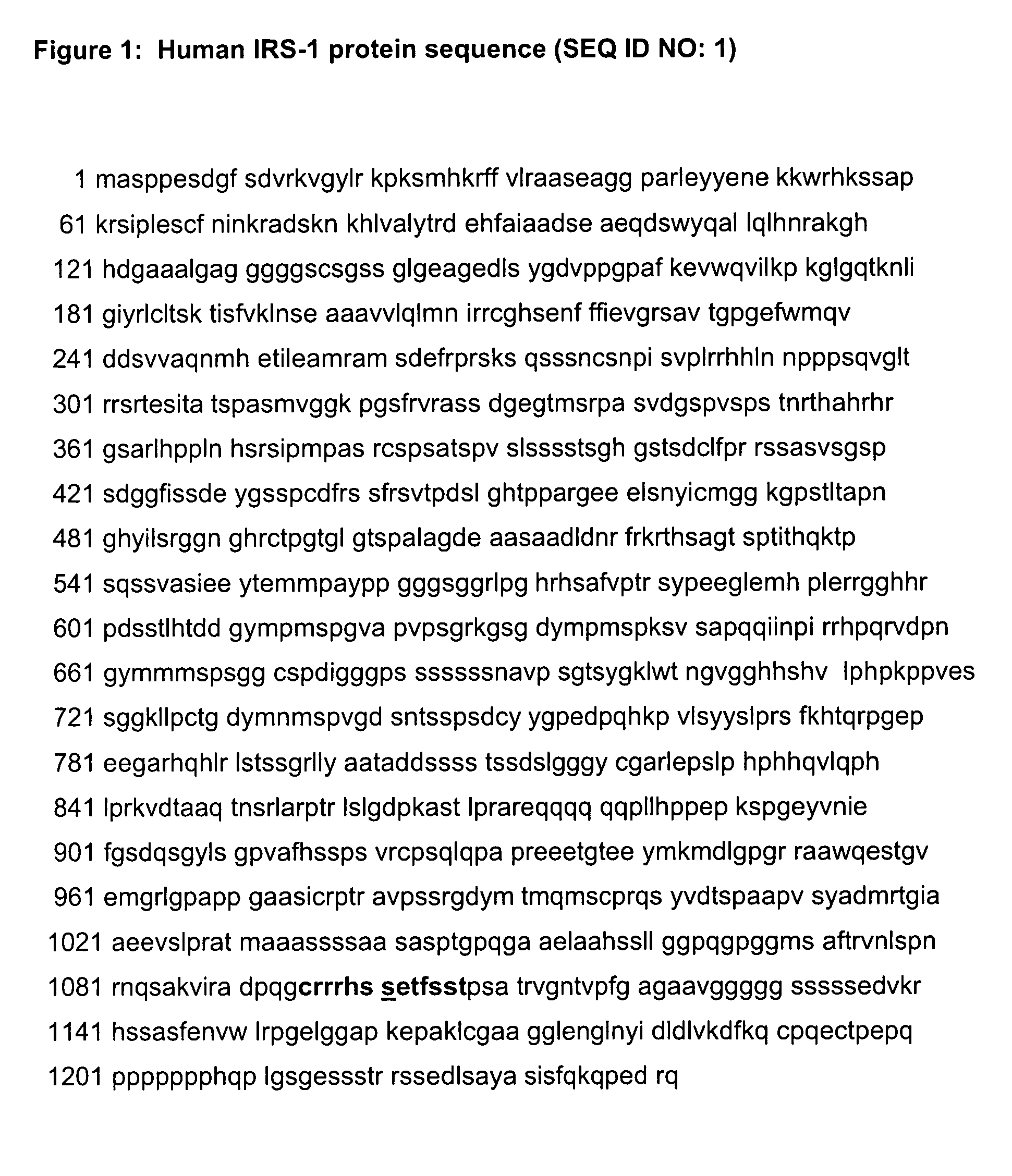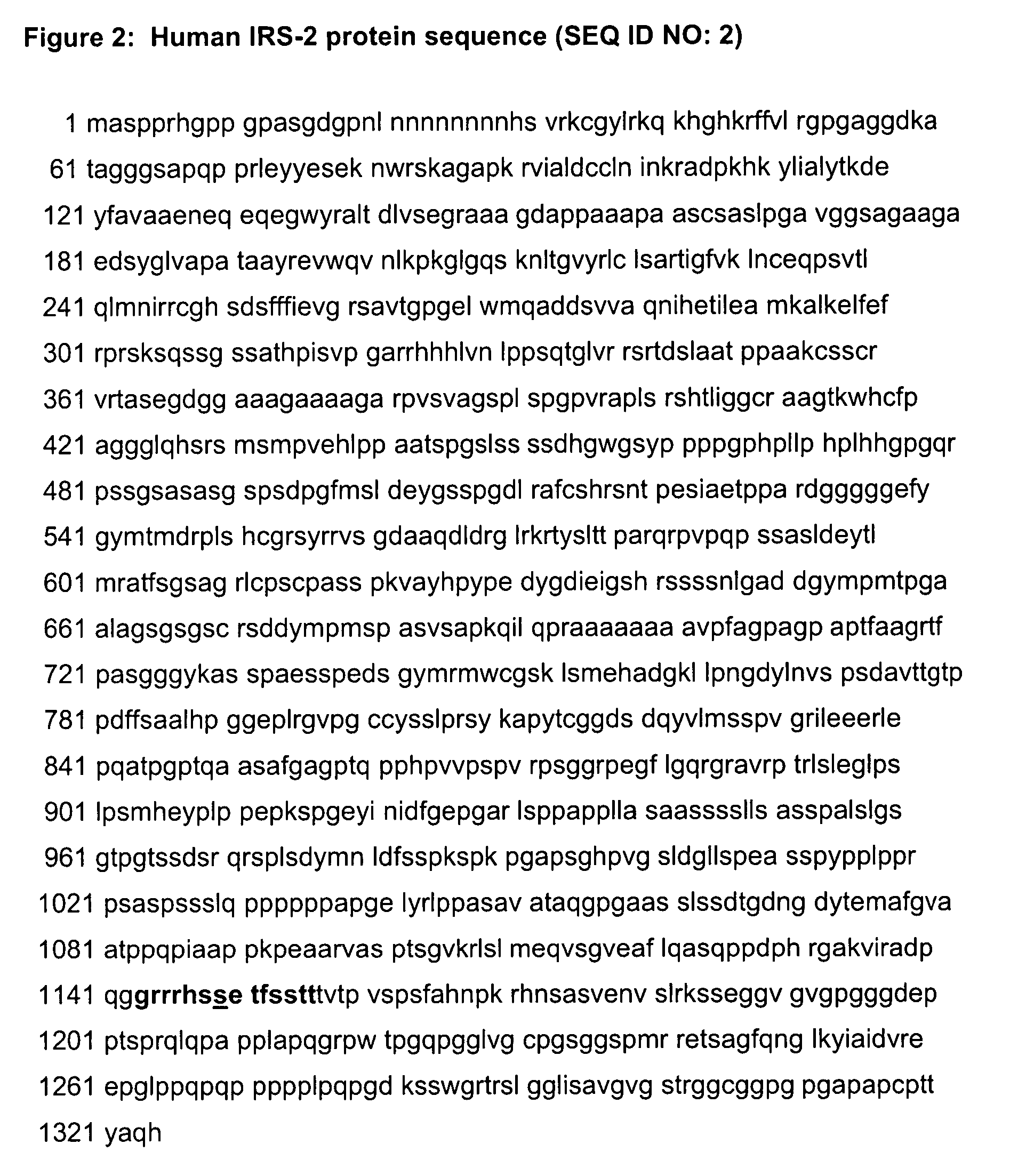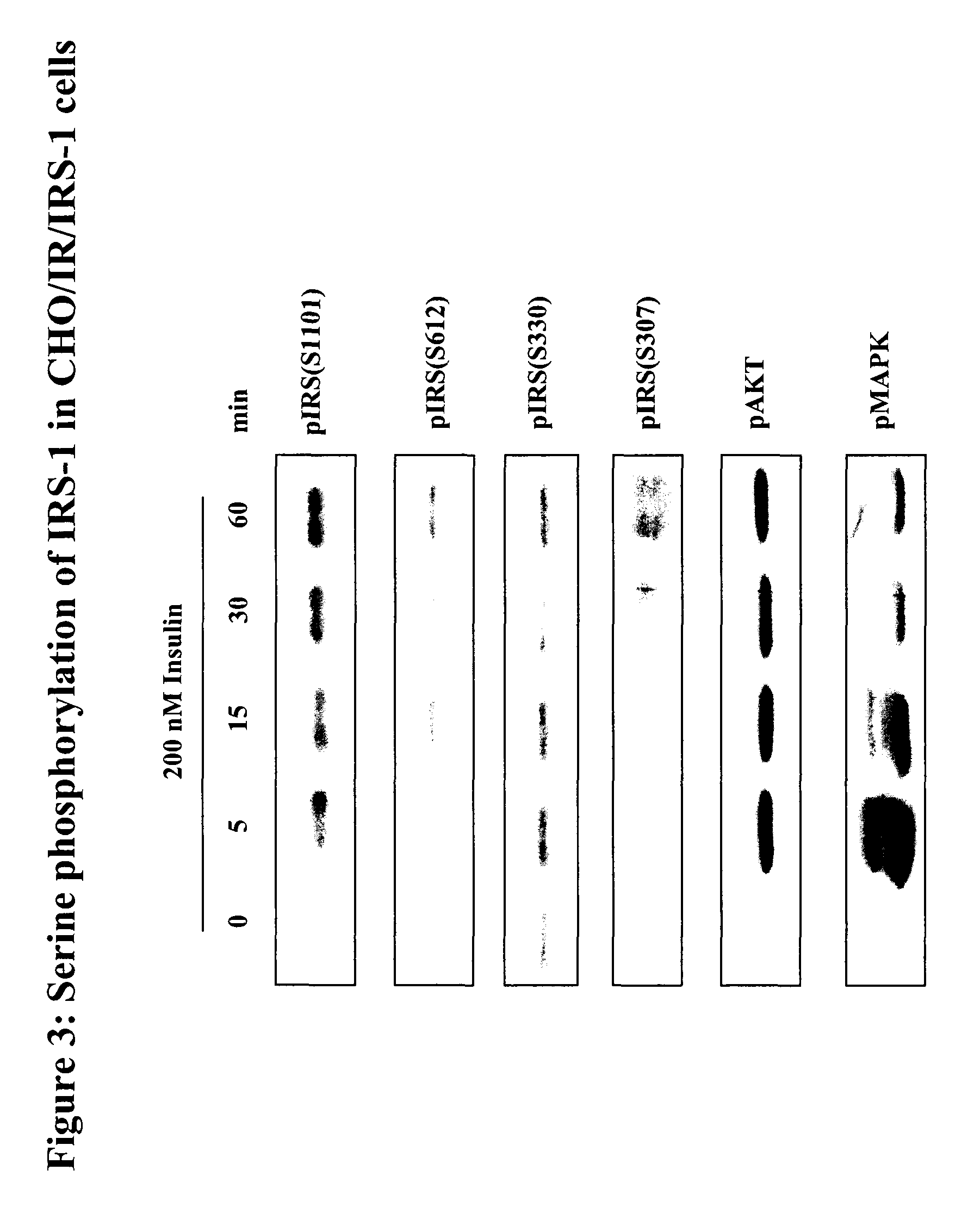Antibodies specific for phosphorylated insulin receptor substrate-1/2 (Ser1101/Ser1149) and uses thereof
a technology of phosphorylated insulin receptor and substrate, applied in the field of antibodies, can solve the problems of difficult identification of simple molecular explanations for insulin resistance and type 2 diabetes, and achieve the effect of reducing the number of antibodies
- Summary
- Abstract
- Description
- Claims
- Application Information
AI Technical Summary
Problems solved by technology
Method used
Image
Examples
example 1
Production of an IRS-1 / 2 (Ser1101 / Ser1149) Phospho-specific Antibody
[0079]A previously unknown IRS-1 phosphorylation site, serine 1101, was identified as described above by predictive analysis of the human IRS-1 protein sequence using the ScanSite program. Yaffe et al., supra. A 13 amino acid phospho-peptide antigen, CRRRHS*SETFSST (SEQ ID NO: 11) (where *S=phosphoserine), corresponding to residues 1095-1107 of human IRS-1 (see SEQ ID NO: 1), was constructed according to standard synthesis techniques using a Rainin / Protein Technologies, Inc., Symphony peptide synthesizer. See ANTIBODIES: A LABORATORY MANUAL, supra.; Merrifield, supra. This peptide antigen also corresponds to highly homologous residues 1143-1155 of human IRS-2 (see SEQ ID NO: 2) (as well as the highly homologous sites in murine IRS-1 and IRS-2; see FIGS. 13-14).
[0080]This peptide was coupled to KLH, and rabbits were injected intradermally (ID) on back with antigen in complete Freunds adjuvant (500 μg antigen per rabb...
example 2
Phosphorylation of IRS-1 (Ser1101) by Protein Kinase C theta
[0089]In order to analyze the potential signaling pathways leading to phosphorylation of Ser 101, CHO-IR / IRS-1 cells were stimulated with insulin, PDGF and with the activator of protein kinase C, TPA, and IRS-1 proteins were immunoprecipitated with a specific IRS-1 antibody followed by immunoblotting with the IRS-1 / 2 (Ser1101 / Ser1449) phospho-antibodies described in Example 1. FIG. 9 shows a robust induction of phosphorylation at Ser1101, particularly upon PKC activation (left panel). As expected, only insulin treatment induced tyrosine phosphorylation of the insulin receptor and IRS-1 (right panel), but all treatments induced MAPK and phosphorylation of PKCs. Also, as previously reported, only insulin and PDGF induced the activation of Akt. This results suggest that despite being selected as an Akt site by ScanSite, Ser1101 is not dependent on Akt activation, but most likely on PKC activation. This is supported by the fact...
example 3
Production of an IRS-1 / 2 (Ser1101 / Ser1149) Phospho-specific Monoclonal Antibody
[0093]Phospho-IRS-1 / 2(Ser1101 / Ser1149)-specific monoclonal antibodies may be produced from spleen cells of the immunized BALB / c mouse described in Example 1, above, following standard procedures (Harlow and Lane, 1988). Briefly, the mouse spleen is fused to SP2 / 0 mouse myeloma fusion partner cells according to the protocol of Kohler and Milstein (1975). Colonies originating from the fusion are screened by ELISA for reactivity to the phospho-peptide and non-phospho-peptide and by Western blot analysis. Colonies found to be positive by ELISA to the phospho-peptide while negative to the non-phospho-peptide may be further characterized by Western blot analysis. Colonies found to be positive by Western blot analysis are then subcloned by limited dilution. Mouse ascites are produced from positive clones obtained from subcloning. Clones are selected for phospho-specificity by ELISA and by Western blot analysis u...
PUM
 Login to View More
Login to View More Abstract
Description
Claims
Application Information
 Login to View More
Login to View More - R&D
- Intellectual Property
- Life Sciences
- Materials
- Tech Scout
- Unparalleled Data Quality
- Higher Quality Content
- 60% Fewer Hallucinations
Browse by: Latest US Patents, China's latest patents, Technical Efficacy Thesaurus, Application Domain, Technology Topic, Popular Technical Reports.
© 2025 PatSnap. All rights reserved.Legal|Privacy policy|Modern Slavery Act Transparency Statement|Sitemap|About US| Contact US: help@patsnap.com



